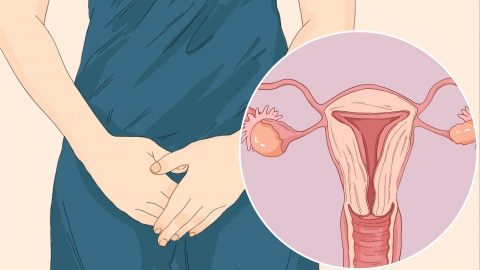How are adnexal cysts formed?
Generally, adnexal cysts may be caused by genetic factors, unhealthy lifestyle habits, environmental factors, endometrial hyperplasia, endometriosis, and other reasons. It is recommended to seek timely medical consultation, identify the underlying cause, and then proceed with recovery through general treatment, medication, or surgical treatment under the guidance of a qualified physician. A detailed explanation is as follows:

1. Genetic Factors
Adnexal cysts caused by genetic factors result from inherited gene mutations that make ovarian or adnexal tissues more prone to cyst formation. It is recommended to undergo regular gynecological examinations to detect and monitor cyst changes early. If the cyst enlarges or poses a risk of malignancy, surgical removal should be considered.
2. Unhealthy Lifestyle Habits
Long-term unhealthy lifestyle habits, such as staying up late, insufficient sleep, excessive stress, and irregular eating patterns, may affect hormone levels and ovarian function, making the ovaries more susceptible to cyst formation. Symptoms may include menstrual irregularities and abdominal discomfort. It is recommended to improve lifestyle habits, maintain a regular schedule, avoid staying up late and excessive fatigue, and adjust dietary habits to prevent obesity or malnutrition.
3. Environmental Factors
Long-term exposure to chemical substances, radiation, or other environmental pollutants, or living in an unhealthy environment for extended periods, may increase the likelihood of developing adnexal cysts. Symptoms may include menstrual irregularities, abdominal discomfort, and weight changes. It is advised to avoid exposure to harmful environmental pollutants such as chemicals and radiation. Improving the living environment and ensuring fresh indoor air and clean water sources are also recommended.
4. Endometrial Hyperplasia
Endometrial hyperplasia refers to irregular proliferation of endometrial glands, accompanied by an increased ratio of glands to stroma. Being in a high-estrogen environment may lead to excessive endometrial growth, increasing the risk of uterine bleeding, which can subsequently cause adnexal cysts. Symptoms may include heavy menstrual bleeding and prolonged menstrual periods. It is recommended, under medical guidance, to use a progesterone-releasing intrauterine device to inhibit endometrial hyperplasia and reduce bleeding.
5. Endometriosis
Endometriosis refers to the presence of endometrial tissue with growth potential outside the uterine cavity. The occurrence of adenomyosis is associated with excessive estrogen levels. In a high-estrogen environment, endometrial tissue proliferates within the uterine muscle layer, forming ectopic lesions that cause thickening of the uterine muscle layer, leading to adnexal cysts. Symptoms may include dysmenorrhea, heavy menstrual bleeding, and irregular menstrual cycles. It is recommended to follow medical advice for drug treatments such as drospirenone and ethinyl estradiol tablets, dydrogesterone tablets, or goserelin microspheres for injection, to regulate hormone levels and control disease progression. If necessary, surgical removal of the ectopic lesions may be considered.
When treating adnexal cysts, individuals should choose appropriate treatment methods based on their specific conditions. At the same time, maintaining healthy lifestyle habits and a positive mindset is important.






